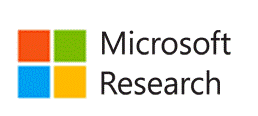The future of trust in AI: insights and actions
Together with Tortoise and many industry experts, we’ve accelerated the conversation about the future of trust in Artificial Intelligence (AI). Compiling insights into a detailed report that anyone can understand and apply, we’ve found that trust must be actively built into systems. Now, we’re looking ahead to the possibilities, addressing the challenges and collating the invaluable insight for you to use to guide the development of sustainable AI systems that are human at heart.
Whether you’re a developer or designer, executive or employee, decision-maker or decision-taker, this is your essential guide to what makes technology trustworthy:
Responsibility + Sustainability + Understandability = Trust in AI
"When systems are poorly designed and tested, the deployment of some solutions can lead to and perpetuate systemic harms."
"Responsible AI is a responsibility and a business imperative that has to be embedded across the whole of the organisation."
Report contributors
 |
 |
|
 |
Trust in technology is trust in people: Actions to take today
As AI takes on a bigger role in business, building trust between people will become ever more complex and face increasing pressure: pressure that will test the wider AI ecosystem and relationships between key stakeholders. The key actions from our findings are presented in the form of three hypotheses below.
1. The impact of ethics: Responsibility is not only a role
Organisations can build trust in the people, practices and platforms that shape their AI solutions by putting the principles of ethical AI at the heart of their operations. Our report highlights that, while the Ethicist role is important, ethical practices are best embedded across an organisation. Those businesses who want to successfully work in the future economy built on these technologies, need to understand that the competencies needed to develop AI ethically are just entry-level requirements. It’s important that careful consideration is taken to avoid the impression of ‘ethics washing’: hiring an Ethicist is not the beginning and end of building trust.

Action 1:
Start your journey by seeking an internal ethics champions and give them the remit to change the responsibility through-out the organisation.
2. Actionable ethics: Standardisation from diversity
Sustainability starts with actionable standards that are legally, ethically and technically robust while also respecting democratic values, human rights and the rule of law, at global scale and in a local context. In the last five years, there has been a proliferation of ethical AI principles and frameworks - but little consensus on ethical best practices. The time has come for actionable ethics standards on AI and for businesses to prepare for an imminent wave of legislation. In our view, that is the opportunity: businesses can gain an advantage by anticipating developments while considering culturally diverse perspectives and inclusive ethical practices.

Action 2:
Get familiar with the work in this space and the specific standards that apply to your sector. As industry specific standards and compliance frameworks become commonplace, a level of organisational competence will be needed to translate them into everyday processes.
3. An ethical ecosystem: From explainability to understandability and prospect to procedure
Going beyond technical explainability into social explainability, where context is considered and impacts reflected on in a more holistic way that is underpinned by an organisation’s values. Technical explanations of complex algorithmic behaviour are not enough to engender trust in AI. Engaging beyond technical components to really understand AI can encourage well-founded trust. The deployment of any AI involves ethical risks. The logic of explainability is that the behaviour of algorithmic decision-making systems should be justified and subject to scrutiny, so that the societal impacts can be more successfully managed by both businesses and governments.

Action 3:
Understanding a system and the decisions that shape it is just one side of the “trust-through transparency” coin. On the other side there is the need to hold those involved with development and deployment accountable for those processes and decisions.
